Mathematics
« Retour
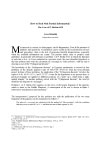
Luca Miatello  Dans le problème 1 du P. Berlin 6619, la dernière partie de chaque ligne est perdue. Dans cet article, j’indique les raisons pour lesquelles l’interprétation de la manière de procéder ne peut se fonder uniquement sur des raisonnements mathématiques, mais aussi sur l’expérimentation concrète d’hypothèses de reconstruction des phrases manquantes. L’analyse du texte du problème indique que les côtés d’un rectangle sont calculés avec l’objectif de montrer un cas du « théorème de Pythagore ». Une autre hypothèse, avancée au début du siècle dernier, est infirmée.
Dans le problème 1 du P. Berlin 6619, la dernière partie de chaque ligne est perdue. Dans cet article, j’indique les raisons pour lesquelles l’interprétation de la manière de procéder ne peut se fonder uniquement sur des raisonnements mathématiques, mais aussi sur l’expérimentation concrète d’hypothèses de reconstruction des phrases manquantes. L’analyse du texte du problème indique que les côtés d’un rectangle sont calculés avec l’objectif de montrer un cas du « théorème de Pythagore ». Une autre hypothèse, avancée au début du siècle dernier, est infirmée.
 In problem 1 of P. Berlin 6619 the final part of each line is lost. In this paper I indicate the reasons why the interpretation of the procedure cannot be based only on mathematical arguments, but also on concrete experimentations of hypotheses of reconstruction of the sentences and restoration of the missing parts. The analysis of the problem text indicates that the sides of a rectangle are calculated with the aim of showing a case of the “Pythagorean theorem”. An alternative hypothesis, advanced at the beginning of last century, is unsupported and unsuitable.
In problem 1 of P. Berlin 6619 the final part of each line is lost. In this paper I indicate the reasons why the interpretation of the procedure cannot be based only on mathematical arguments, but also on concrete experimentations of hypotheses of reconstruction of the sentences and restoration of the missing parts. The analysis of the problem text indicates that the sides of a rectangle are calculated with the aim of showing a case of the “Pythagorean theorem”. An alternative hypothesis, advanced at the beginning of last century, is unsupported and unsuitable.
 Consulter cet article (44196) -
Consulter cet article (44196) -  Télécharger cet article au format pdf (23736)
Télécharger cet article au format pdf (23736)
ENiM 12, 2019, p. 233-246.
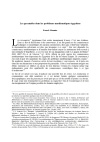
Franck Monnier  Le papyrus Rhind place les pyramides au centre de quelques problèmes en lien avec des calculs de seqed et de hauteur. Deux autres énoncés, les problèmes pRhind no 60 et pMoscou no 14, ont été maintes fois mis en parallèle avec ces derniers et commentés en raison des difficultés d’interprétation qu’ils suscitent. La terminologie employée, le contexte des exercices, mais aussi l’état de l’archéologie peuvent permettre d’identifier les constructions décrites. L’architecture autorise également quelques comparaisons significatives qui amènent à nous interroger sur l’une des sources d’inspiration des papyri mathématiques du Moyen Empire.
Le papyrus Rhind place les pyramides au centre de quelques problèmes en lien avec des calculs de seqed et de hauteur. Deux autres énoncés, les problèmes pRhind no 60 et pMoscou no 14, ont été maintes fois mis en parallèle avec ces derniers et commentés en raison des difficultés d’interprétation qu’ils suscitent. La terminologie employée, le contexte des exercices, mais aussi l’état de l’archéologie peuvent permettre d’identifier les constructions décrites. L’architecture autorise également quelques comparaisons significatives qui amènent à nous interroger sur l’une des sources d’inspiration des papyri mathématiques du Moyen Empire.
 The Rhind mathematical papyrus incorporates a small group of problems focusing on pyramids and demonstrating how to calculate their seked side slopes and heights. Two other problems, pRhind 60 and pMoscow 14, have been discussed extensively in conjunction with the former problems due to the interpretive challenges they pose. The terminology they use and the context of the exercises mean that archaeology and philology can potentially provide information aiding understanding of the buildings described. Architecture uncovered in excavations may represent structures that inspired the problems outlined in the Middle Kingdom mathematical papyri, and the different classes of evidence are compared here.
The Rhind mathematical papyrus incorporates a small group of problems focusing on pyramids and demonstrating how to calculate their seked side slopes and heights. Two other problems, pRhind 60 and pMoscow 14, have been discussed extensively in conjunction with the former problems due to the interpretive challenges they pose. The terminology they use and the context of the exercises mean that archaeology and philology can potentially provide information aiding understanding of the buildings described. Architecture uncovered in excavations may represent structures that inspired the problems outlined in the Middle Kingdom mathematical papyri, and the different classes of evidence are compared here.
 Consulter cet article (48617) -
Consulter cet article (48617) -  Télécharger cet article au format pdf (24302)
Télécharger cet article au format pdf (24302)
5 article(s) - 2 avril 2025.
:
224 articles
4 650 572 téléchargements
9 357 305 consulations.
Index des auteurs  Mots clés
Mots clés 
Derniers articles : 
Maxim Panov
The Synodal Decree of 196 BC in Copies by J.G. Wilkinson: Addendum
(ENiM 18, p. 61-64 — 2 avril 2025) 
Thierry-Louis Bergerot, Livia Bergerot
Le scribe et l’égyptologue sous l’oeil du dieu
(ENiM 18, p. 55-59 — 11 mars 2025) 
Franck Monnier
Ṯsmt ou swnw. D’autres cas possibles de couronne en forme de bastion ou de tour crénelée
(ENiM 18, p. 37-53 — 11 mars 2025) 
Robert Steven Bianchi
Duplication and Continuity
(ENiM 18, p. 13-36 — 11 mars 2025) 
Frédéric Mougenot
Rénénoutet à la porte de la maison
(ENiM 18, p. 1-12 — 29 janvier 2025) 
CENiM - Mise en ligne des volumes Ă©puisĂ©s : 
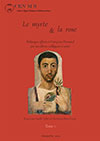 RĂ©unis par GaĂ«lle Tallet et Christiane Zivie-Coche Le myrte & la rose. MĂ©langes offerts Ă Françoise Dunand par ses Ă©lèves, collègues et amis, CENiM 9, Montpellier, 2014 — (1 novembre 2014)
RĂ©unis par GaĂ«lle Tallet et Christiane Zivie-Coche Le myrte & la rose. MĂ©langes offerts Ă Françoise Dunand par ses Ă©lèves, collègues et amis, CENiM 9, Montpellier, 2014 — (1 novembre 2014) 
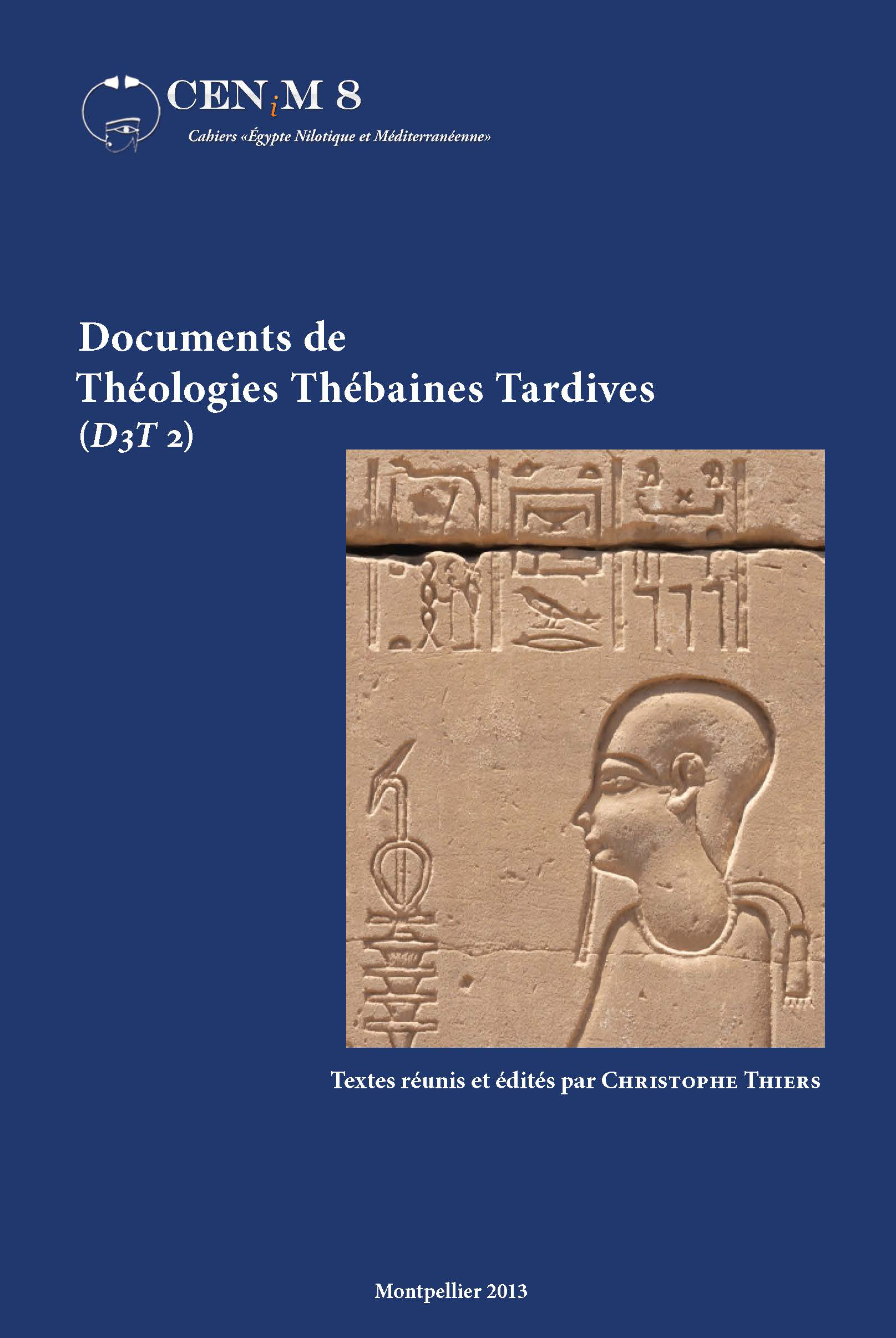 Textes rĂ©unis et Ă©ditĂ©s par Christophe Thiers Documents de ThĂ©ologies ThĂ©baines Tardives (D3T 2), CENiM 8, Montpellier, 2013 — (9 avril 2013)
Textes rĂ©unis et Ă©ditĂ©s par Christophe Thiers Documents de ThĂ©ologies ThĂ©baines Tardives (D3T 2), CENiM 8, Montpellier, 2013 — (9 avril 2013) 
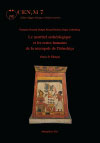 Françoise Dunand, Bahgat Ahmed Ibrahim, Roger Lichtenberg Le matĂ©riel archĂ©ologique et les restes humains de la nĂ©cropole de Dabashiya, CENiM 7, Montpellier, 2013 — (28 mars 2013)
Françoise Dunand, Bahgat Ahmed Ibrahim, Roger Lichtenberg Le matĂ©riel archĂ©ologique et les restes humains de la nĂ©cropole de Dabashiya, CENiM 7, Montpellier, 2013 — (28 mars 2013) 
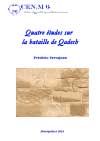 FrĂ©dĂ©ric Servajean Quatre Ă©tudes sur la bataille de Qadech, CENiM 6, Montpellier, 2012 — (26 mai 2012)
FrĂ©dĂ©ric Servajean Quatre Ă©tudes sur la bataille de Qadech, CENiM 6, Montpellier, 2012 — (26 mai 2012) 
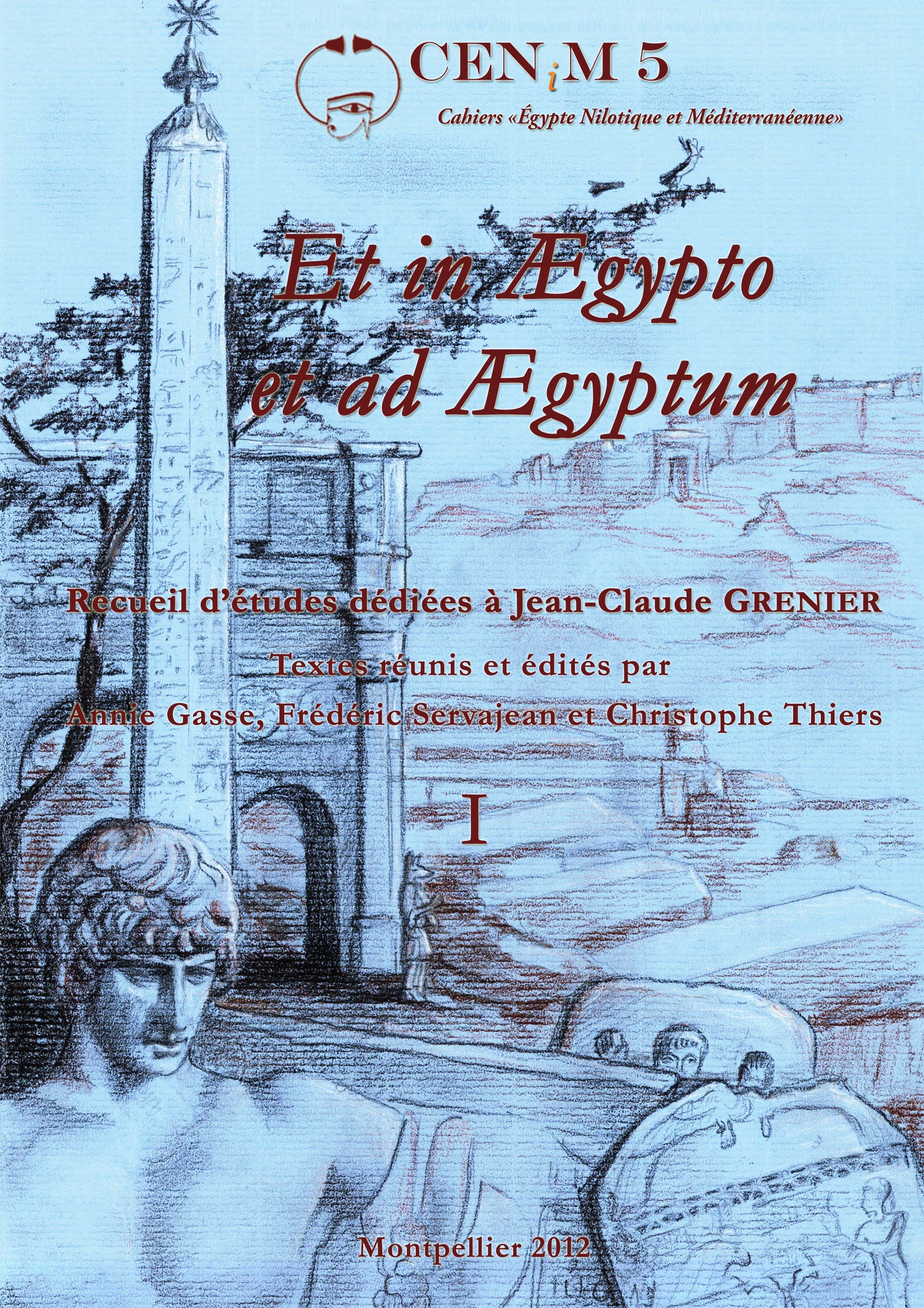 Textes rĂ©unis et Ă©ditĂ©s par A. Gasse, Fr. Servajean, et Chr. Thiers Et in Ægypto et ad Ægyptum, Recueil d’études dĂ©diĂ©es Ă Jean-Claude Grenier, CENiM 5, Montpellier, 2012 — (25 avril 2012)
Textes rĂ©unis et Ă©ditĂ©s par A. Gasse, Fr. Servajean, et Chr. Thiers Et in Ægypto et ad Ægyptum, Recueil d’études dĂ©diĂ©es Ă Jean-Claude Grenier, CENiM 5, Montpellier, 2012 — (25 avril 2012) 
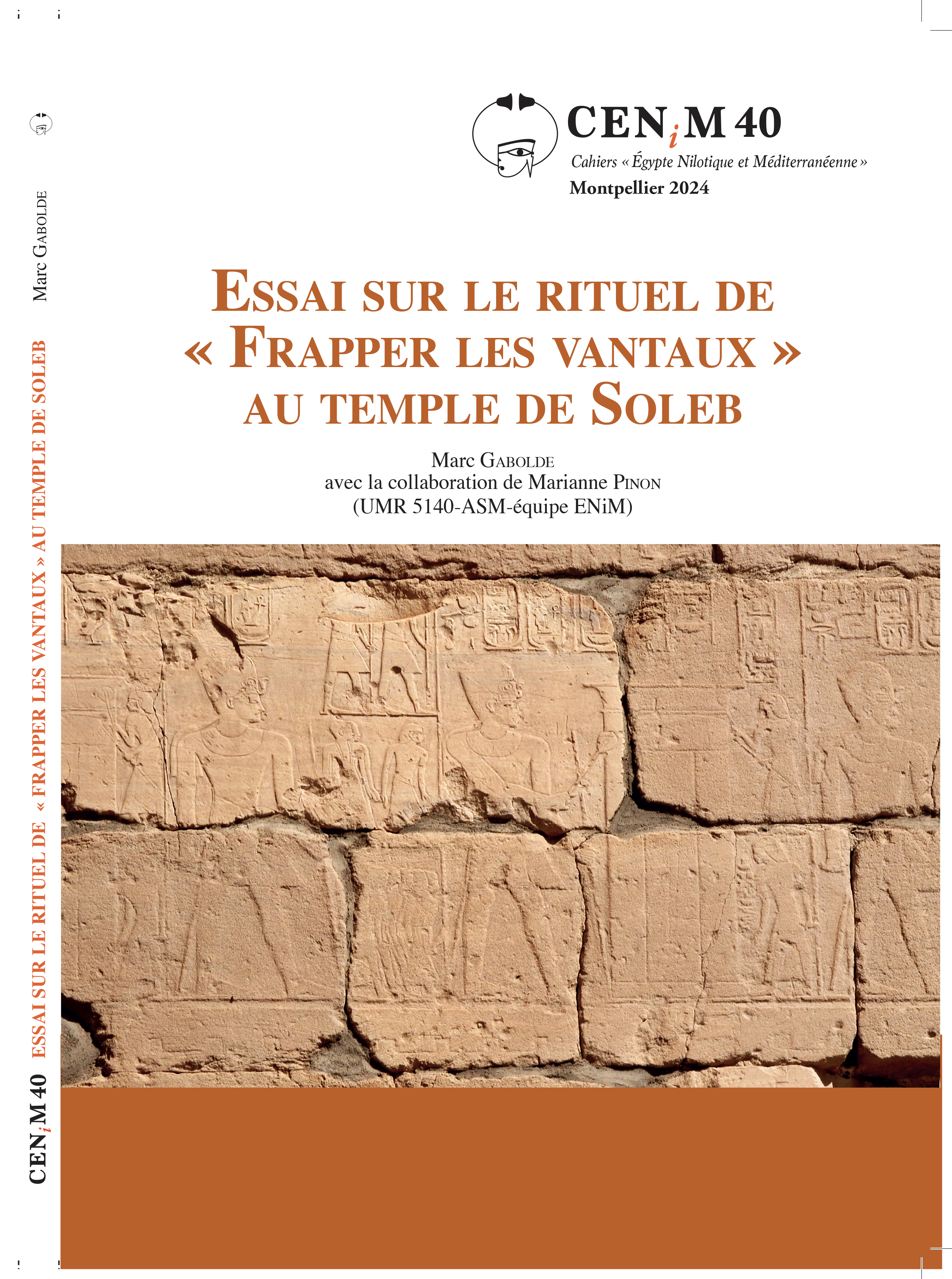 Marc Gabolde Essai sur le rituel de « Frapper les vantaux » au temple de Soleb (avec la collaboration de Marianne Pinon), CENiM 40, Montpellier, 2024 — (10 juillet 2024)
Marc Gabolde Essai sur le rituel de « Frapper les vantaux » au temple de Soleb (avec la collaboration de Marianne Pinon), CENiM 40, Montpellier, 2024 — (10 juillet 2024) 
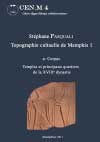 StĂ©phane Pasquali Topographie cultuelle de Memphis 1 a- Corpus. Temples et principaux quartiers de la XVIIIe dynastie, CENiM 4, Montpellier, 2011 — (7 mars 2011)
StĂ©phane Pasquali Topographie cultuelle de Memphis 1 a- Corpus. Temples et principaux quartiers de la XVIIIe dynastie, CENiM 4, Montpellier, 2011 — (7 mars 2011) 
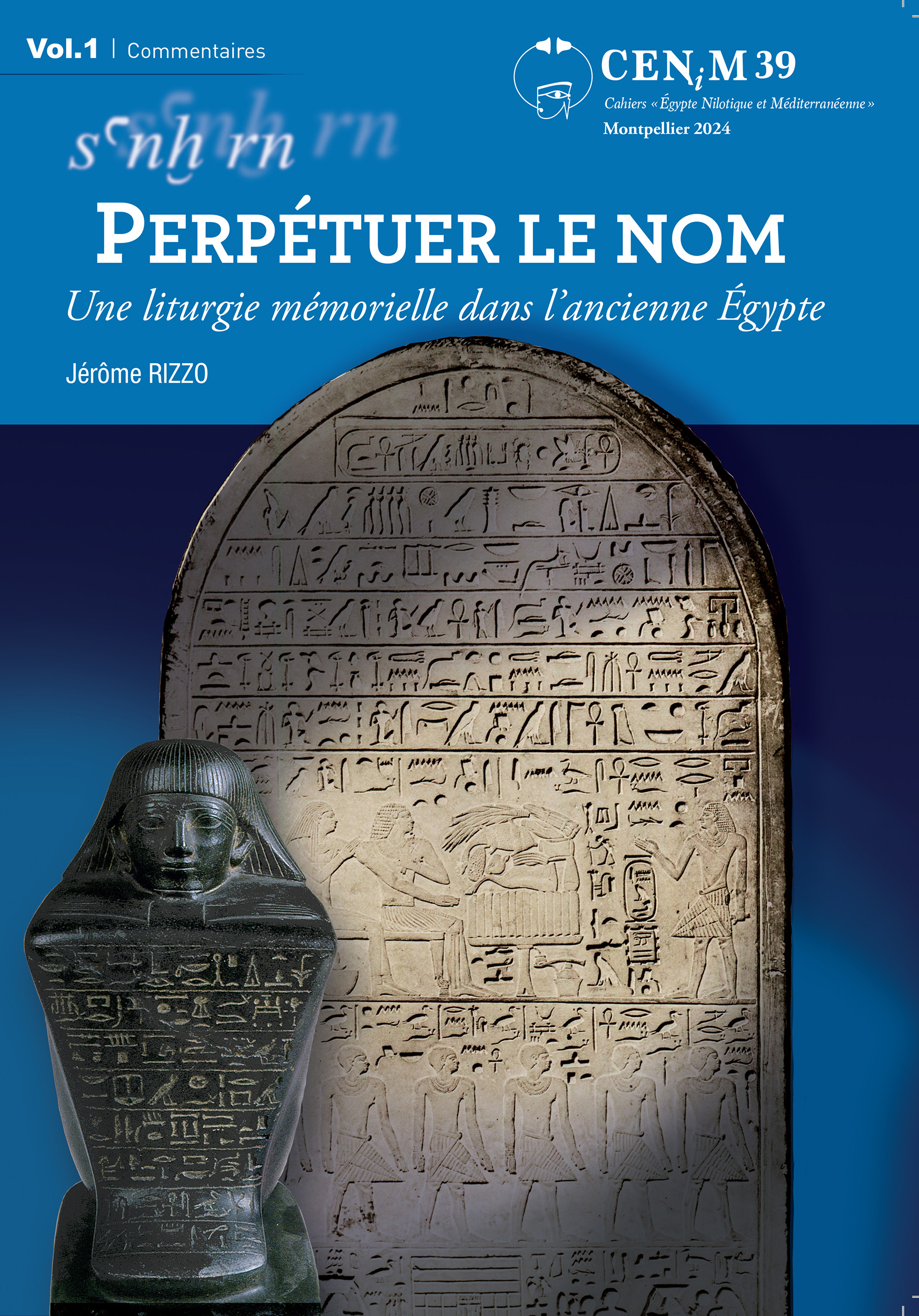 Jérôme Rizzo « Perpétuer le nom » (sanx rn)
Une liturgie mĂ©morielle dans l’ancienne Égypte (3. vols), CENiM 39, Montpellier, 2024 — (23 fĂ©vrier 2024)
Jérôme Rizzo « Perpétuer le nom » (sanx rn)
Une liturgie mĂ©morielle dans l’ancienne Égypte (3. vols), CENiM 39, Montpellier, 2024 — (23 fĂ©vrier 2024) 
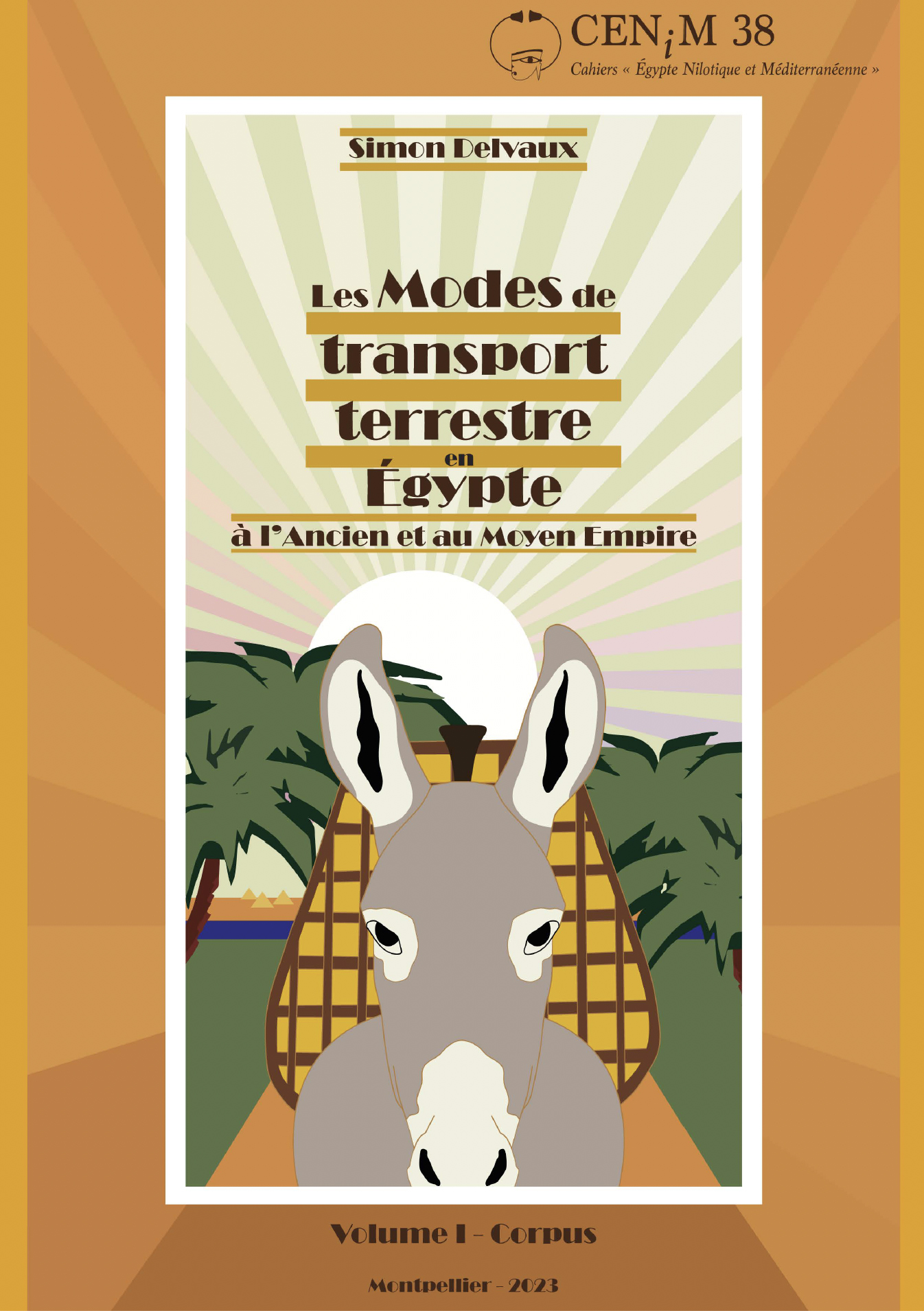 Simon Delvaux Les modes de transport terrestre en Égypte Ă l’Ancien et au Moyen Empire, CENiM 38, Montpellier, 2023 — (19 dĂ©cembre 2023)
Simon Delvaux Les modes de transport terrestre en Égypte Ă l’Ancien et au Moyen Empire, CENiM 38, Montpellier, 2023 — (19 dĂ©cembre 2023) 
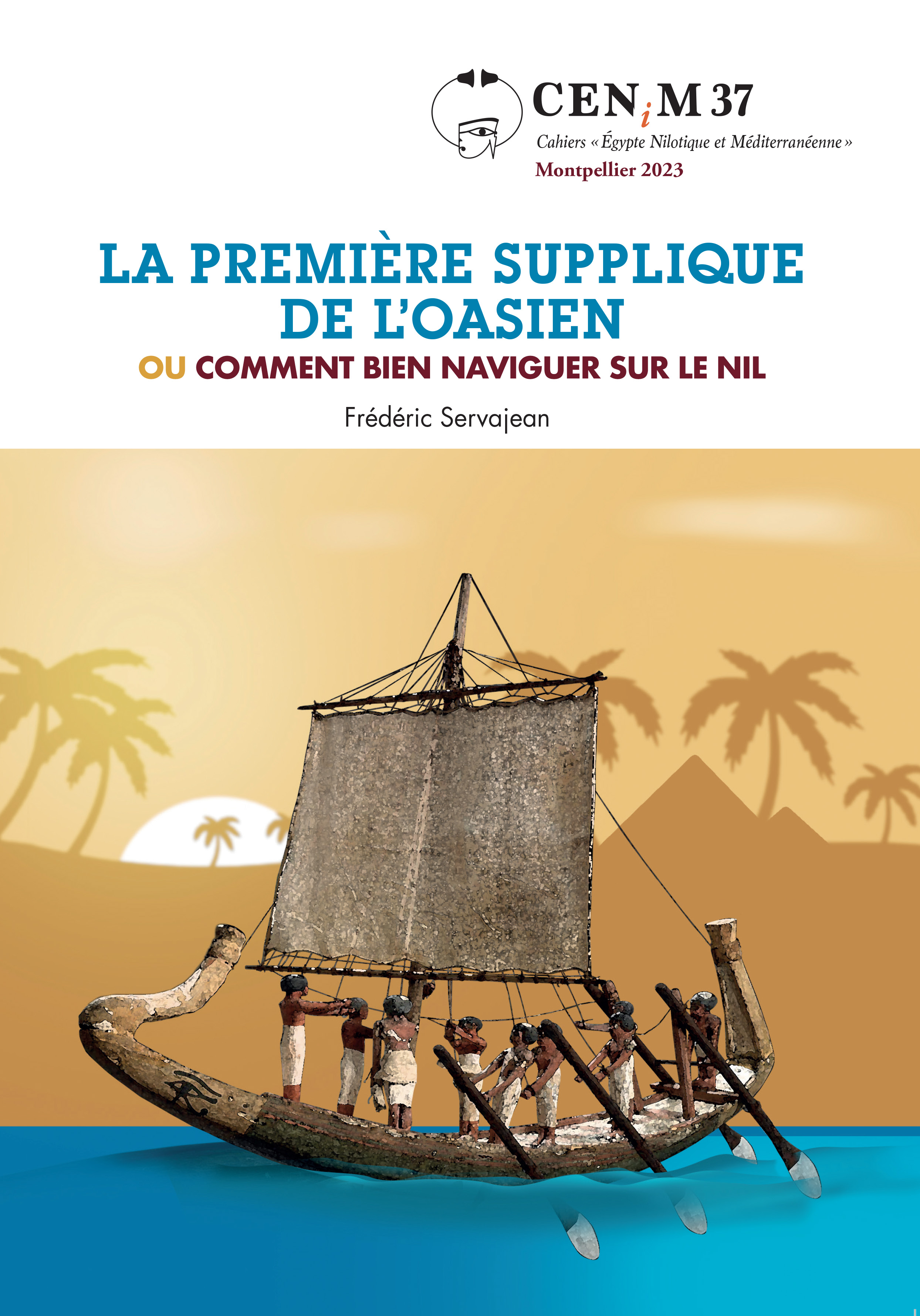 FrĂ©dĂ©ric Servajean La Première supplique de l’Oasien ou comment bien naviguer sur le Nil, CENiM 37, Montpellier, 2023 — (14 dĂ©cembre 2023)
FrĂ©dĂ©ric Servajean La Première supplique de l’Oasien ou comment bien naviguer sur le Nil, CENiM 37, Montpellier, 2023 — (14 dĂ©cembre 2023) 
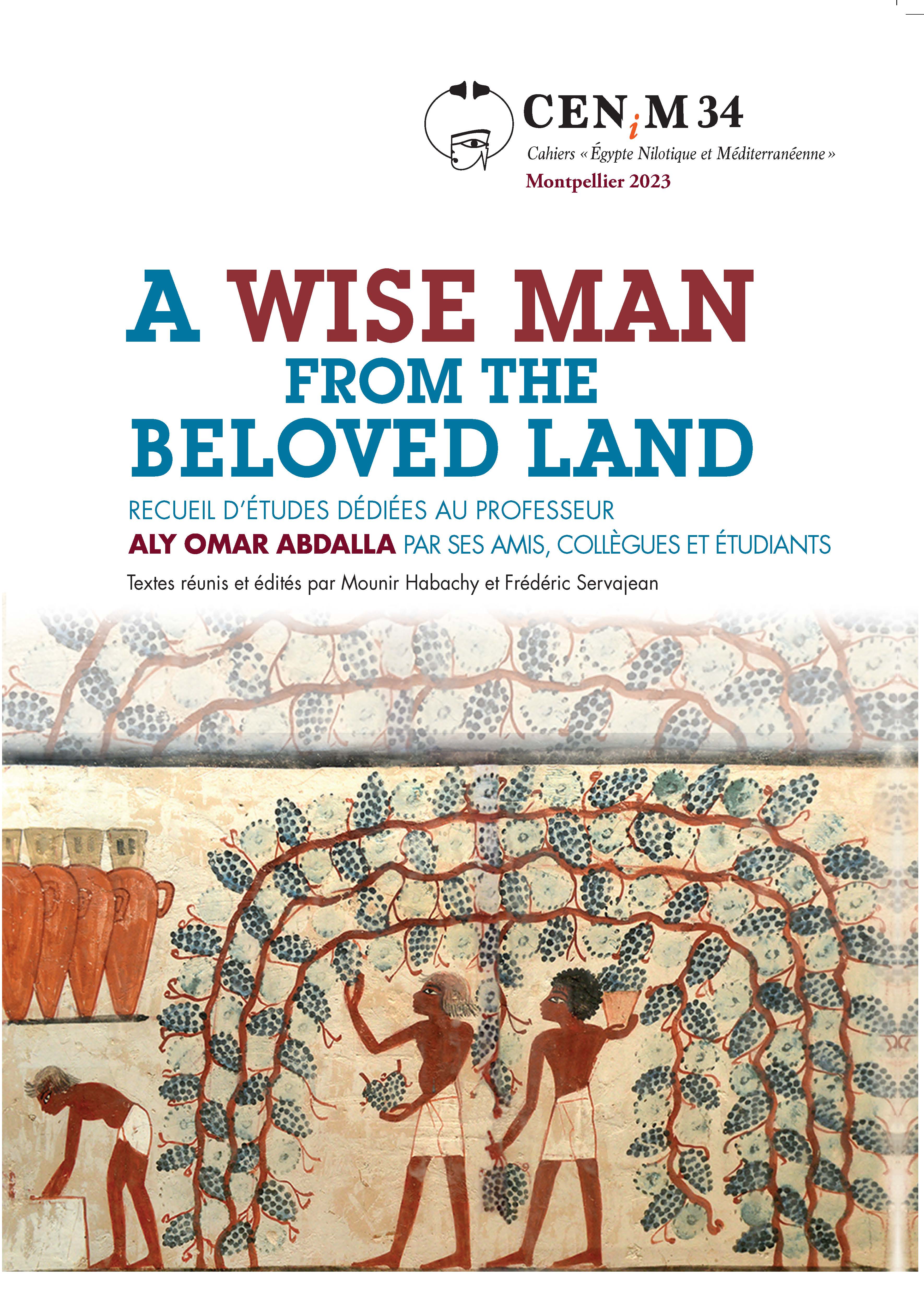 Textes rĂ©unis et Ă©ditĂ©s par Mounir Habachy et FrĂ©dĂ©ric Servajean A wise man from the Beloved land. Recueil d’études dĂ©diĂ©es au professeur Aly Omar Abdalla par ses amis, collègues et Ă©tudiants, CENiM 34, Montpellier, 2023 — (30 aoĂ»t 2023)
Textes rĂ©unis et Ă©ditĂ©s par Mounir Habachy et FrĂ©dĂ©ric Servajean A wise man from the Beloved land. Recueil d’études dĂ©diĂ©es au professeur Aly Omar Abdalla par ses amis, collègues et Ă©tudiants, CENiM 34, Montpellier, 2023 — (30 aoĂ»t 2023) 
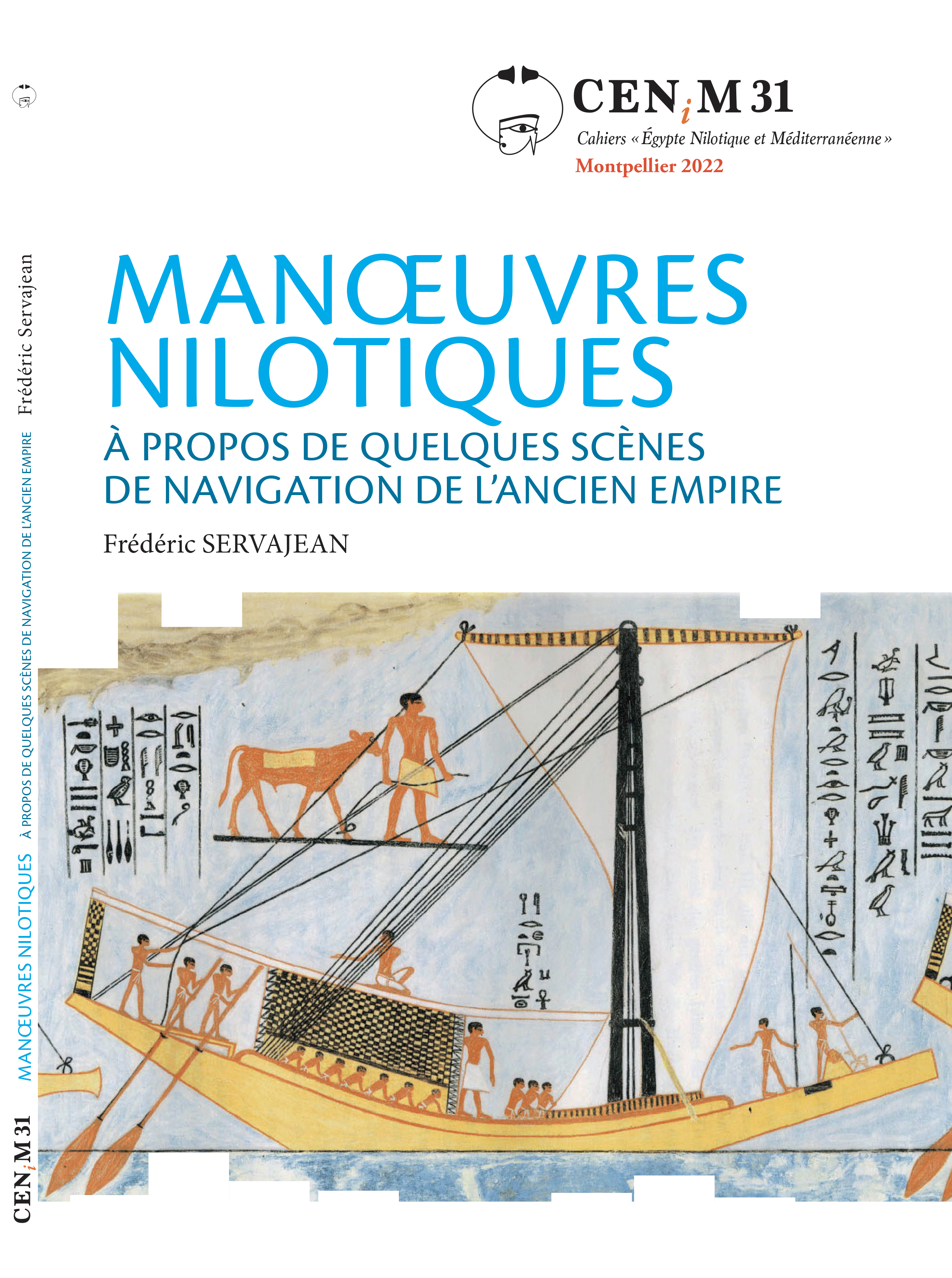 FrĂ©dĂ©ric Servajean Manoeuvres nilotiques. Ă€ propos de quelques scènes de navigation Ă l’Ancien Empire, CENiM 31, Montpellier, 2022 — (3 mai 2022)
FrĂ©dĂ©ric Servajean Manoeuvres nilotiques. Ă€ propos de quelques scènes de navigation Ă l’Ancien Empire, CENiM 31, Montpellier, 2022 — (3 mai 2022) 
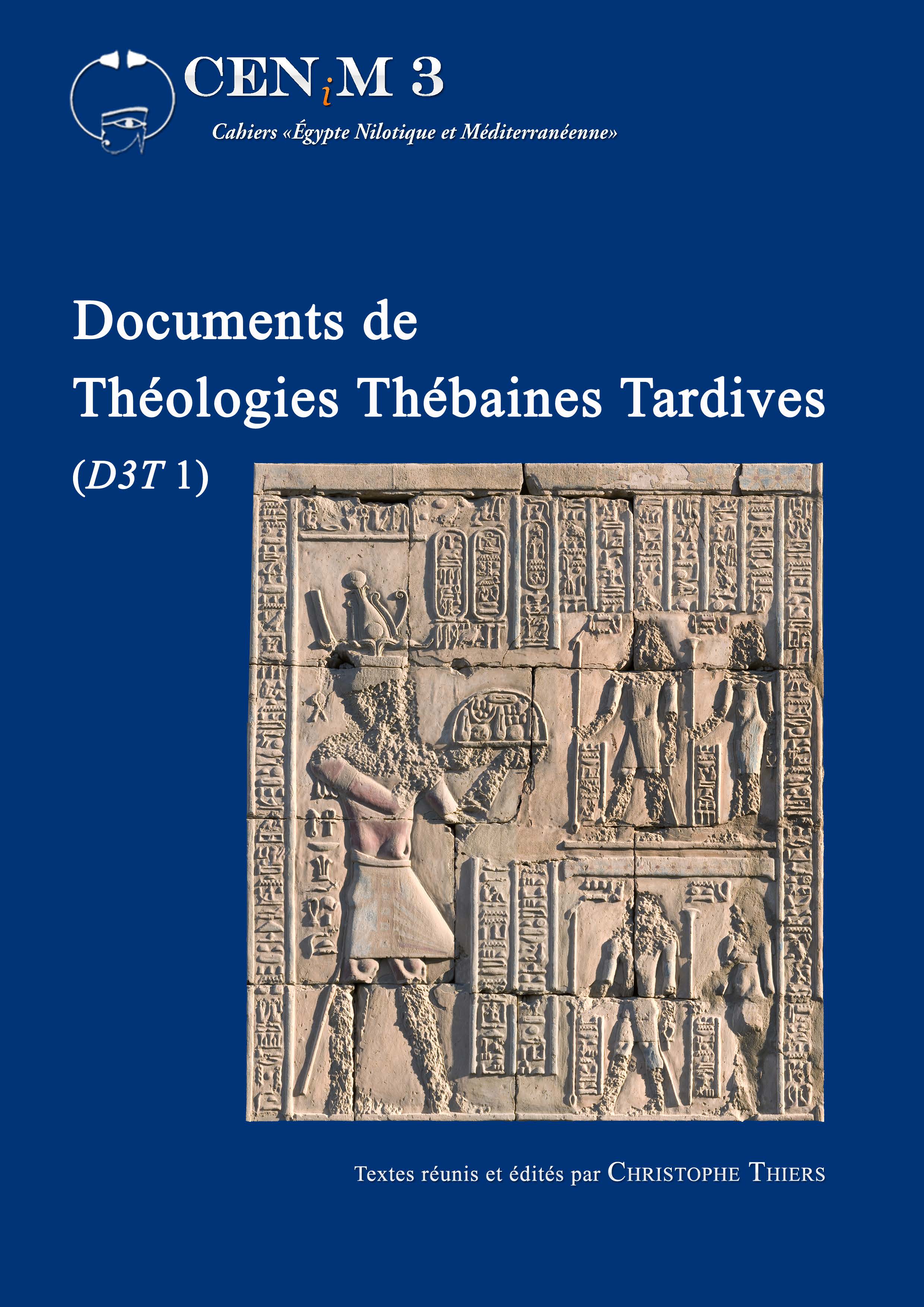 Textes réunis et édités par Christophe Thiers Documents de Théologies Thébaines
Tardives (D3T 1), CENiM 3, Montpellier, 2009 — (7 fevrier 2010)
Textes réunis et édités par Christophe Thiers Documents de Théologies Thébaines
Tardives (D3T 1), CENiM 3, Montpellier, 2009 — (7 fevrier 2010) 
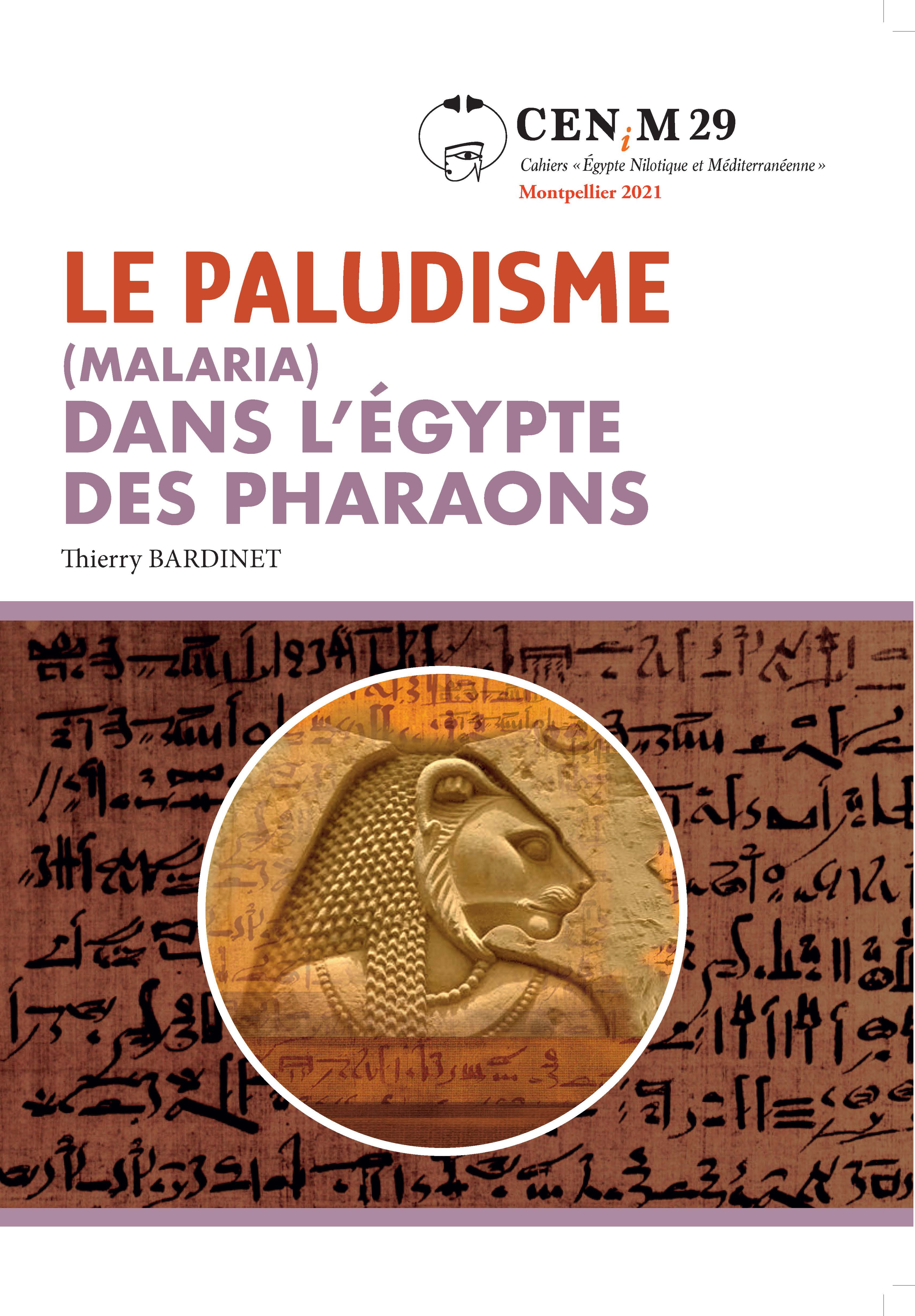 Thierry Bardinet Le paludisme (malaria) dans l’Égypte des pharaons. Étude d’un contexte mĂ©dical et historique, CENiM 29, Montpellier, 2021 — (19 novembre 2021)
Thierry Bardinet Le paludisme (malaria) dans l’Égypte des pharaons. Étude d’un contexte mĂ©dical et historique, CENiM 29, Montpellier, 2021 — (19 novembre 2021) 
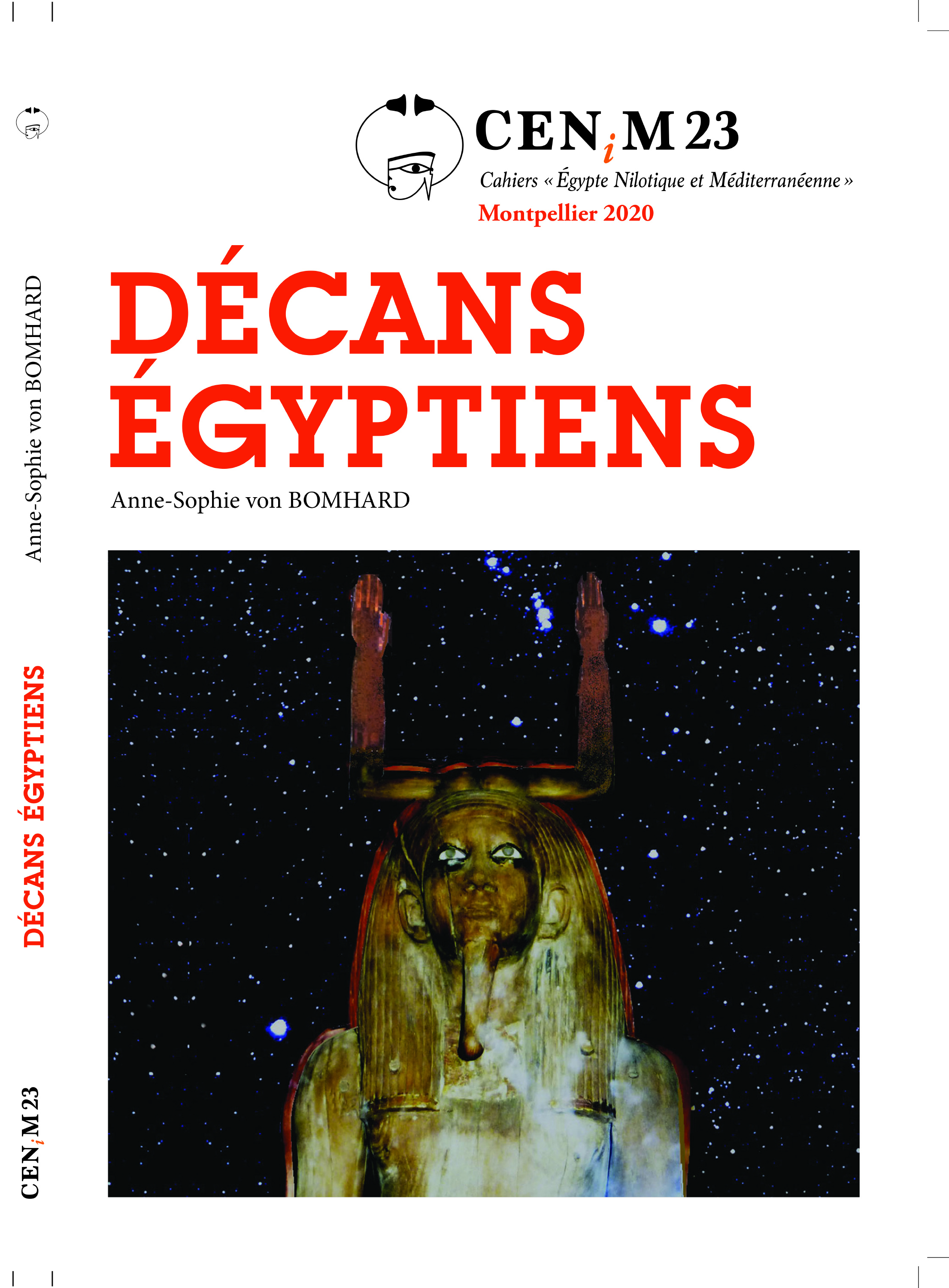 Anne-Sophie von BOMHARD DĂ©cans Ă©gyptiens, CENiM 23, Montpellier, 2020 — (2020)
Anne-Sophie von BOMHARD DĂ©cans Ă©gyptiens, CENiM 23, Montpellier, 2020 — (2020) 
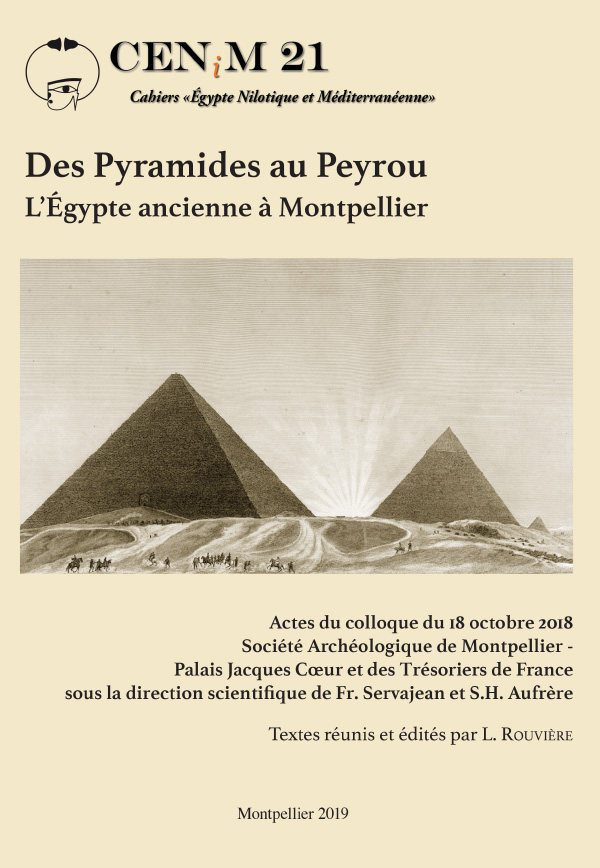 Textes rĂ©unis et Ă©ditĂ©s par L. Rouvière Des Pyramides au Peyrou. L’Égypte ancienne Ă Montpellier. Actes du colloque du 18 octobre 2018 SociĂ©tĂ© ArchĂ©ologique de Montpellier - Palais Jacques Coeur et des TrĂ©soriers de France sous la direction scientifique de Fr. Servajean et S.H. Aufrère, CENiM 21, Montpellier, 2019 — (1 mars 2019)
Textes rĂ©unis et Ă©ditĂ©s par L. Rouvière Des Pyramides au Peyrou. L’Égypte ancienne Ă Montpellier. Actes du colloque du 18 octobre 2018 SociĂ©tĂ© ArchĂ©ologique de Montpellier - Palais Jacques Coeur et des TrĂ©soriers de France sous la direction scientifique de Fr. Servajean et S.H. Aufrère, CENiM 21, Montpellier, 2019 — (1 mars 2019) 
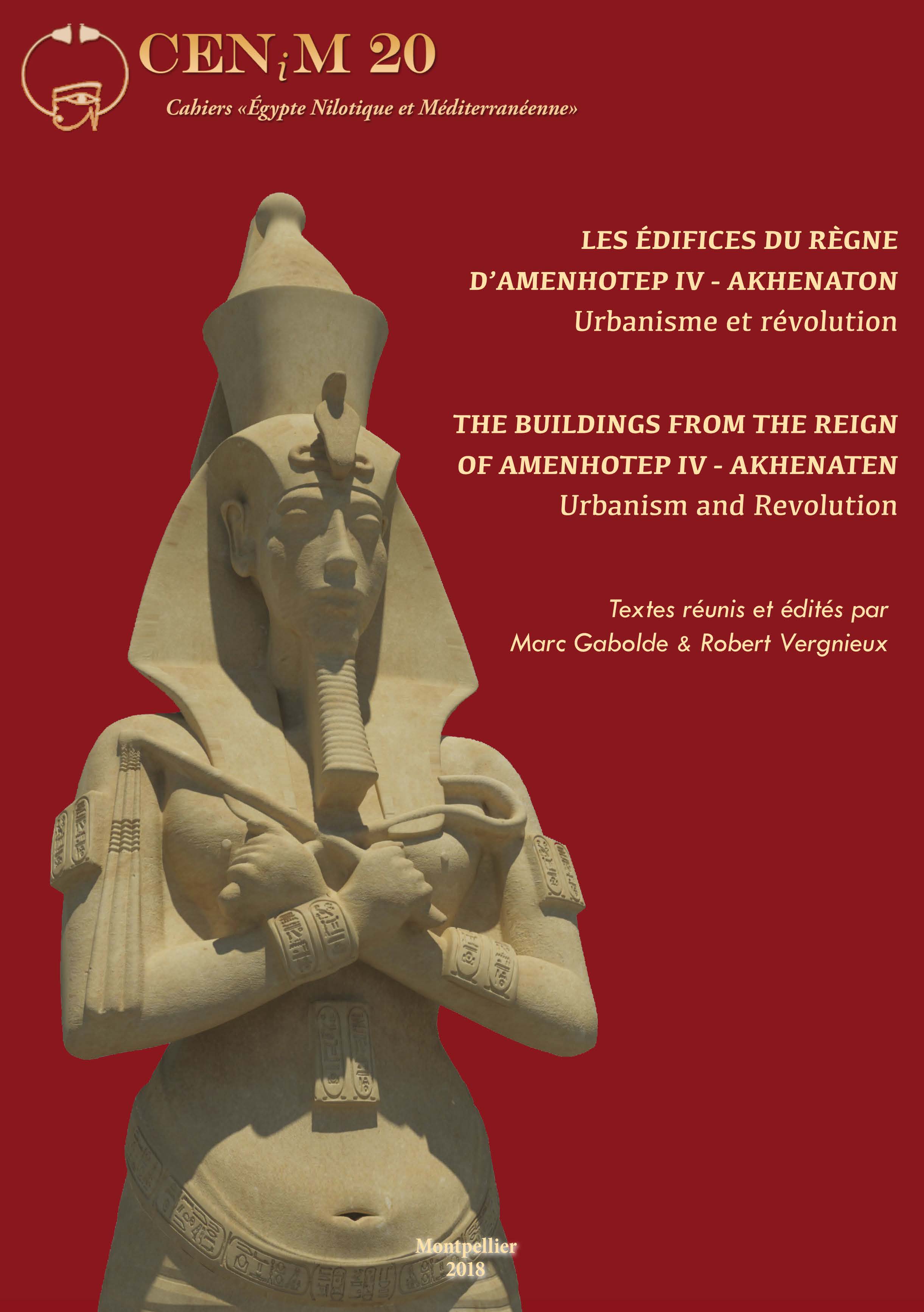 Textes rĂ©unis et Ă©ditĂ©s par Marc Gabolde & Robert Vergnieux Les Ă©difices du règne d’Amenhotep IV - Akhenaton. Urbanisme et rĂ©volution, CENiM 20, Montpellier, 2018 — (17 dĂ©cembre 2018)
Textes rĂ©unis et Ă©ditĂ©s par Marc Gabolde & Robert Vergnieux Les Ă©difices du règne d’Amenhotep IV - Akhenaton. Urbanisme et rĂ©volution, CENiM 20, Montpellier, 2018 — (17 dĂ©cembre 2018) 
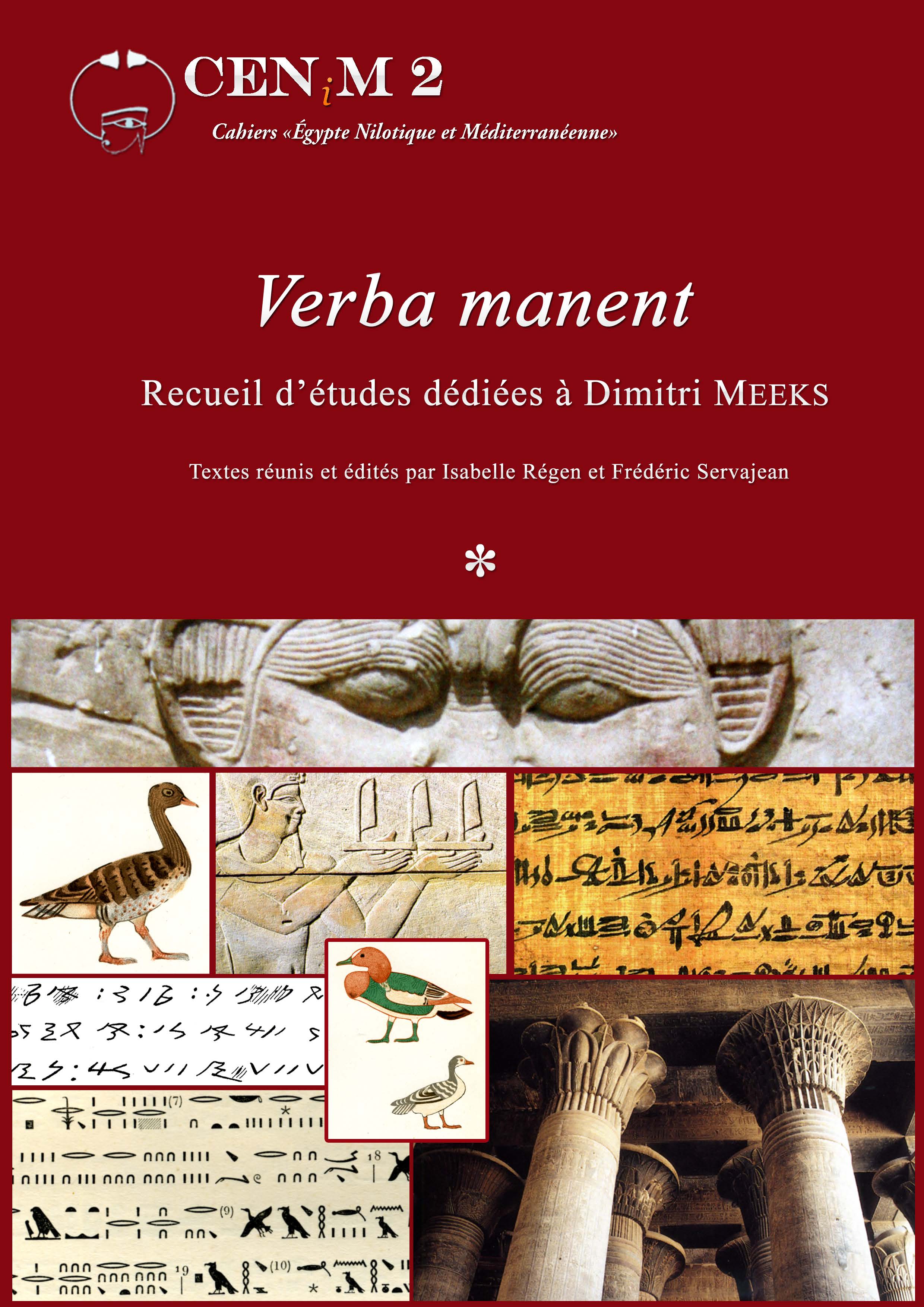 Textes rĂ©unis et Ă©ditĂ©s par Isabelle RĂ©gen et FrĂ©dĂ©ric Servajean Verba manent. Recueil d’études dĂ©diĂ©es Ă Dimitri Meeks par ses collègues et amis, CENiM 2, Montpellier, 2009 — (16 dĂ©cembre 2009)
Textes rĂ©unis et Ă©ditĂ©s par Isabelle RĂ©gen et FrĂ©dĂ©ric Servajean Verba manent. Recueil d’études dĂ©diĂ©es Ă Dimitri Meeks par ses collègues et amis, CENiM 2, Montpellier, 2009 — (16 dĂ©cembre 2009) 
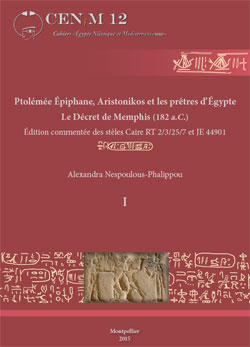 Alexandra Nespoulous-Phalippou PtolĂ©mĂ©e Épiphane, Aristonikos et les prĂŞtres d’Égypte. Le DĂ©cret de Memphis (182 a.C.). Édition commentĂ©e des stèles Caire RT 2/3/25/7 et JE 44901, CENiM 12, Montpellier, 2015 — (29 janvier 2016)
Alexandra Nespoulous-Phalippou PtolĂ©mĂ©e Épiphane, Aristonikos et les prĂŞtres d’Égypte. Le DĂ©cret de Memphis (182 a.C.). Édition commentĂ©e des stèles Caire RT 2/3/25/7 et JE 44901, CENiM 12, Montpellier, 2015 — (29 janvier 2016) 
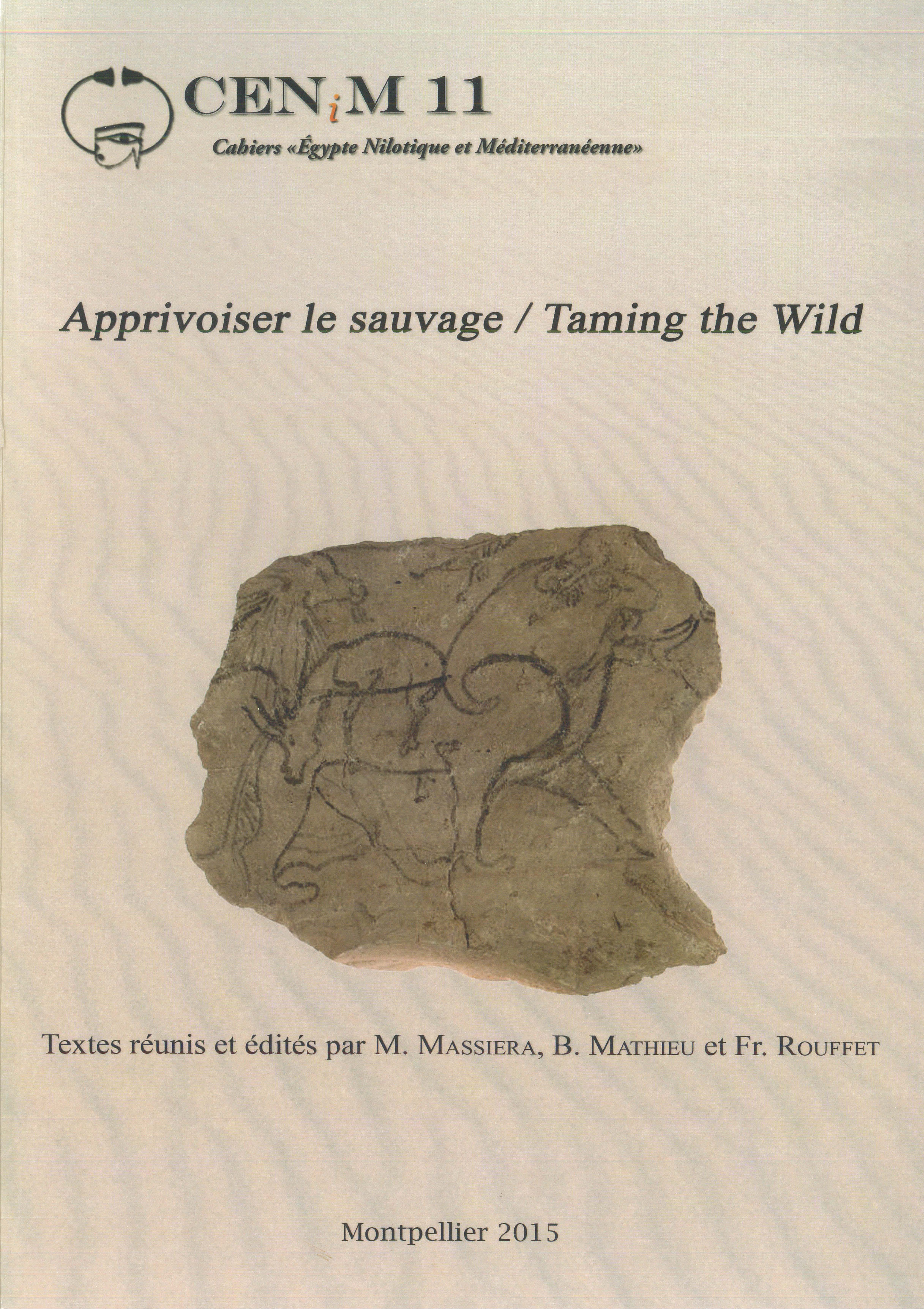 Textes rĂ©unis et Ă©ditĂ©s par M Massiera, B. Mathieu et Fr. Rouffet Apprivoiser le sauvage / Taming the Wild, CENiM 11, Montpellier, 2015 — (2015)
Textes rĂ©unis et Ă©ditĂ©s par M Massiera, B. Mathieu et Fr. Rouffet Apprivoiser le sauvage / Taming the Wild, CENiM 11, Montpellier, 2015 — (2015) 
 ÉditĂ©s par Christiane Zivie-Coche Offrandes, rites et rituels dans les temples d’époques ptolĂ©maĂŻque et romaine. Actes de la journĂ©e d’études de l’équipe EPHE (EA 4519) « Égypte ancienne : ArchĂ©ologie, Langue, Religion » Paris, 27 juin 2013, CENiM 10, Montpellier, 2015 — (16 dĂ©cembre 2015)
ÉditĂ©s par Christiane Zivie-Coche Offrandes, rites et rituels dans les temples d’époques ptolĂ©maĂŻque et romaine. Actes de la journĂ©e d’études de l’équipe EPHE (EA 4519) « Égypte ancienne : ArchĂ©ologie, Langue, Religion » Paris, 27 juin 2013, CENiM 10, Montpellier, 2015 — (16 dĂ©cembre 2015) 
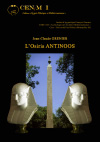 Jean-Claude Grenier L'Osiris ANTINOOS, CENiM 1, Montpellier, 2008 — (26 dĂ©cembre 2008)
Jean-Claude Grenier L'Osiris ANTINOOS, CENiM 1, Montpellier, 2008 — (26 dĂ©cembre 2008) 
TDENiM - Mise en ligne des volumes Ă©puisĂ©s : 
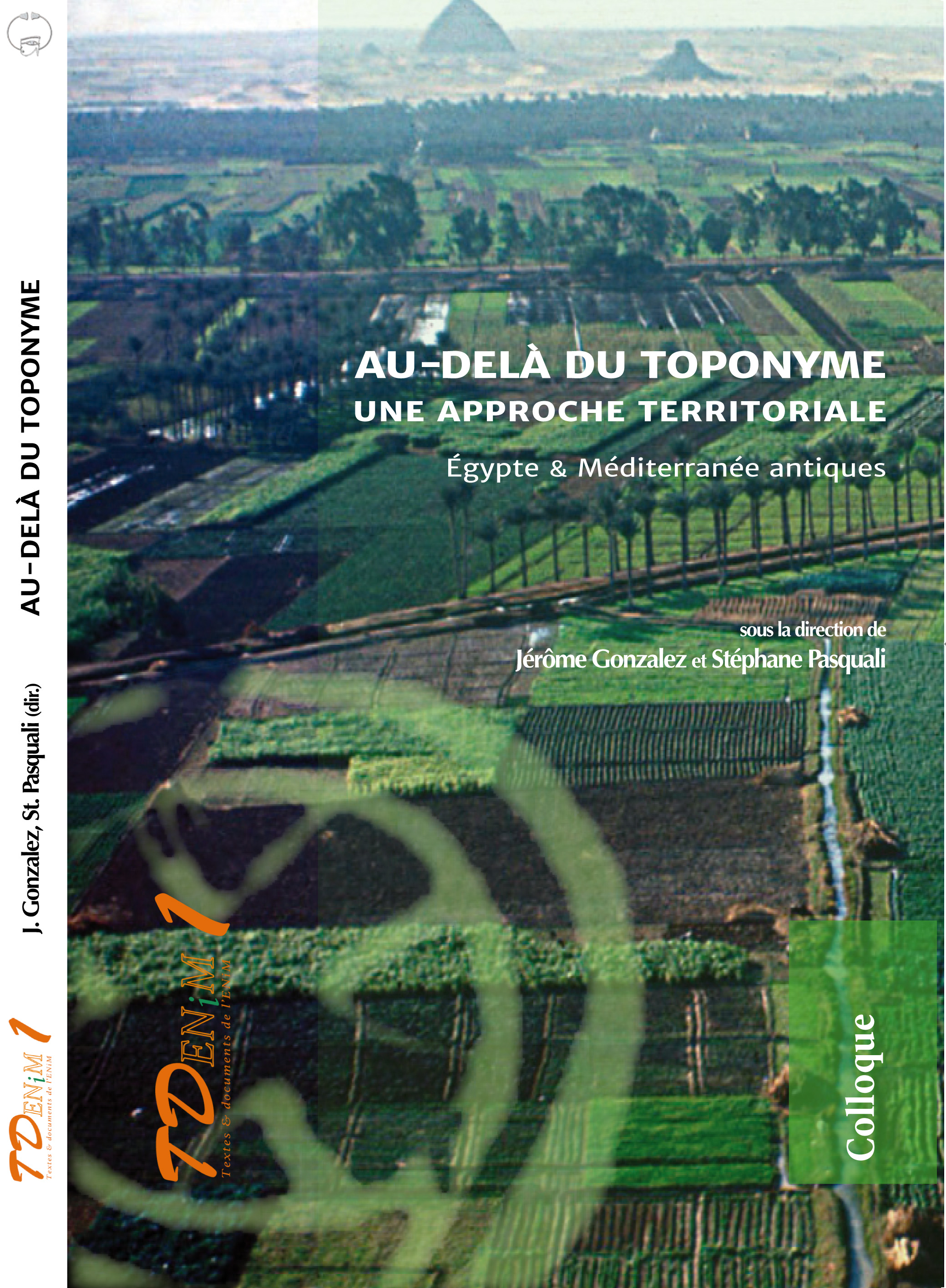 sous la direction de JĂ©rĂ´me Gonzalez et StĂ©phane Pasquali Au-delĂ du toponyme. Une approche territoriale. Égypte & MĂ©diterranĂ©e antiques, TDENiM 1, Montpellier, 2019 — (dĂ©cembre 2019)
sous la direction de JĂ©rĂ´me Gonzalez et StĂ©phane Pasquali Au-delĂ du toponyme. Une approche territoriale. Égypte & MĂ©diterranĂ©e antiques, TDENiM 1, Montpellier, 2019 — (dĂ©cembre 2019) 
 Dans le problème 1 du P. Berlin 6619, la dernière partie de chaque ligne est perdue. Dans cet article, j’indique les raisons pour lesquelles l’interprétation de la manière de procéder ne peut se fonder uniquement sur des raisonnements mathématiques, mais aussi sur l’expérimentation concrète d’hypothèses de reconstruction des phrases manquantes. L’analyse du texte du problème indique que les côtés d’un rectangle sont calculés avec l’objectif de montrer un cas du « théorème de Pythagore ». Une autre hypothèse, avancée au début du siècle dernier, est infirmée.
Dans le problème 1 du P. Berlin 6619, la dernière partie de chaque ligne est perdue. Dans cet article, j’indique les raisons pour lesquelles l’interprétation de la manière de procéder ne peut se fonder uniquement sur des raisonnements mathématiques, mais aussi sur l’expérimentation concrète d’hypothèses de reconstruction des phrases manquantes. L’analyse du texte du problème indique que les côtés d’un rectangle sont calculés avec l’objectif de montrer un cas du « théorème de Pythagore ». Une autre hypothèse, avancée au début du siècle dernier, est infirmée. In problem 1 of P. Berlin 6619 the final part of each line is lost. In this paper I indicate the reasons why the interpretation of the procedure cannot be based only on mathematical arguments, but also on concrete experimentations of hypotheses of reconstruction of the sentences and restoration of the missing parts. The analysis of the problem text indicates that the sides of a rectangle are calculated with the aim of showing a case of the “Pythagorean theorem”. An alternative hypothesis, advanced at the beginning of last century, is unsupported and unsuitable.
In problem 1 of P. Berlin 6619 the final part of each line is lost. In this paper I indicate the reasons why the interpretation of the procedure cannot be based only on mathematical arguments, but also on concrete experimentations of hypotheses of reconstruction of the sentences and restoration of the missing parts. The analysis of the problem text indicates that the sides of a rectangle are calculated with the aim of showing a case of the “Pythagorean theorem”. An alternative hypothesis, advanced at the beginning of last century, is unsupported and unsuitable.
 Consulter cet article (44196) -
Consulter cet article (44196) -  Télécharger cet article au format pdf (23736)
Télécharger cet article au format pdf (23736) Le papyrus Rhind place les pyramides au centre de quelques problèmes en lien avec des calculs de seqed et de hauteur. Deux autres Ă©noncĂ©s, les problèmes pRhind no 60 et pMoscou no 14, ont Ă©tĂ© maintes fois mis en parallèle avec ces derniers et commentĂ©s en raison des difficultĂ©s d’interprĂ©tation qu’ils suscitent. La terminologie employĂ©e, le contexte des exercices, mais aussi l’état de l’archĂ©ologie peuvent permettre d’identifier les constructions dĂ©crites. L’architecture autorise Ă©galement quelques comparaisons significatives qui amènent Ă nous interroger sur l’une des sources d’inspiration des papyri mathĂ©matiques du Moyen Empire.
Le papyrus Rhind place les pyramides au centre de quelques problèmes en lien avec des calculs de seqed et de hauteur. Deux autres énoncés, les problèmes pRhind no 60 et pMoscou no 14, ont été maintes fois mis en parallèle avec ces derniers et commentés en raison des difficultés d’interprétation qu’ils suscitent. La terminologie employée, le contexte des exercices, mais aussi l’état de l’archéologie peuvent permettre d’identifier les constructions décrites. L’architecture autorise également quelques comparaisons significatives qui amènent à nous interroger sur l’une des sources d’inspiration des papyri mathématiques du Moyen Empire. The Rhind mathematical papyrus incorporates a small group of problems focusing on pyramids and demonstrating how to calculate their seked side slopes and heights. Two other problems, pRhind 60 and pMoscow 14, have been discussed extensively in conjunction with the former problems due to the interpretive challenges they pose. The terminology they use and the context of the exercises mean that archaeology and philology can potentially provide information aiding understanding of the buildings described. Architecture uncovered in excavations may represent structures that inspired the problems outlined in the Middle Kingdom mathematical papyri, and the different classes of evidence are compared here.
The Rhind mathematical papyrus incorporates a small group of problems focusing on pyramids and demonstrating how to calculate their seked side slopes and heights. Two other problems, pRhind 60 and pMoscow 14, have been discussed extensively in conjunction with the former problems due to the interpretive challenges they pose. The terminology they use and the context of the exercises mean that archaeology and philology can potentially provide information aiding understanding of the buildings described. Architecture uncovered in excavations may represent structures that inspired the problems outlined in the Middle Kingdom mathematical papyri, and the different classes of evidence are compared here.
 Consulter cet article (48617) -
Consulter cet article (48617) -  Télécharger cet article au format pdf (24302)
Télécharger cet article au format pdf (24302)





 Anne-Sophie von BOMHARD DĂ©cans Ă©gyptiens, CENiM 23, Montpellier, 2020 — (2020)
Anne-Sophie von BOMHARD DĂ©cans Ă©gyptiens, CENiM 23, Montpellier, 2020 — (2020) 
 Jean-Claude Grenier L'Osiris ANTINOOS, CENiM 1, Montpellier, 2008 — (26 dĂ©cembre 2008)
Jean-Claude Grenier L'Osiris ANTINOOS, CENiM 1, Montpellier, 2008 — (26 dĂ©cembre 2008) 

 Twitter
Twitter 






















 Contact
Contact
 Abonnez-vous !
Abonnez-vous ! Équipe Égypte Nilotique et Méditerranéenne
Équipe Égypte Nilotique et Méditerranéenne UMR 5140 « Archéologie des Sociétés Méditerranéennes » (Cnrs)
UMR 5140 « Archéologie des Sociétés Méditerranéennes » (Cnrs) Université Paul Valéry - Montpellier III
Université Paul Valéry - Montpellier III